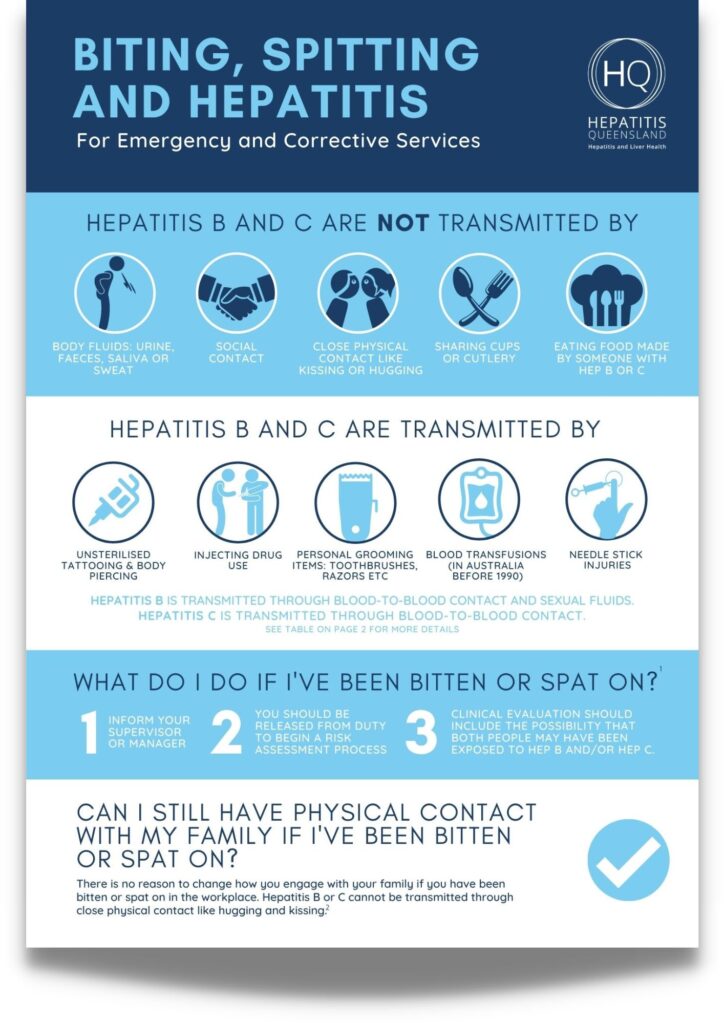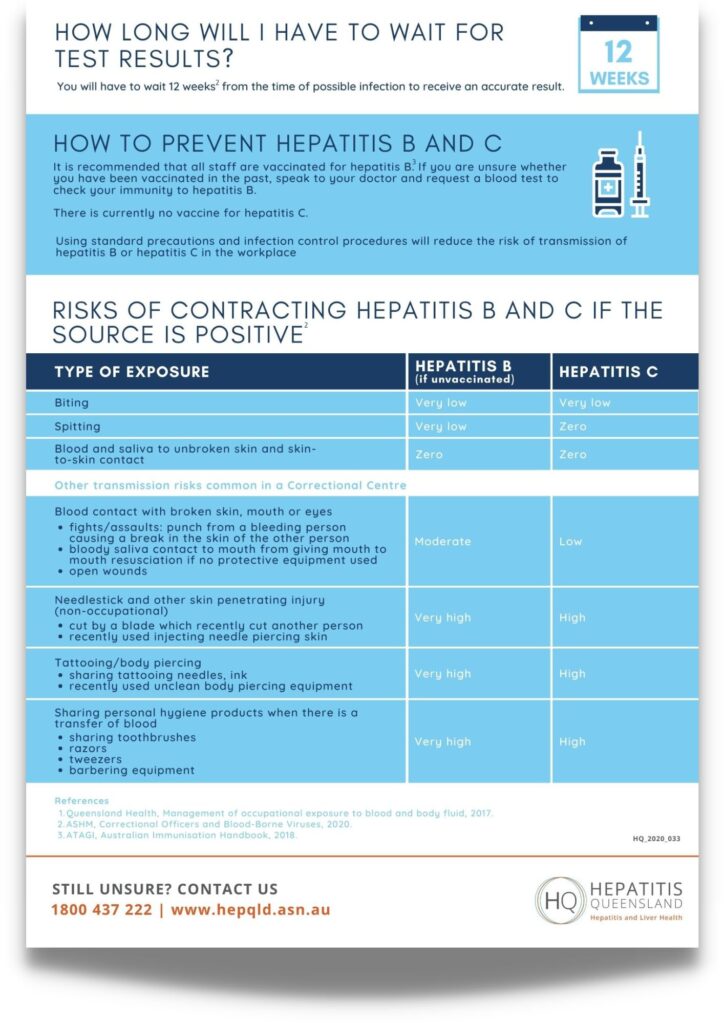Biting, Spitting and Hepatitis: For Emergency and Corrective Services
Biting, Spitting and Hepatitis: For Emergency and Corrective Services
This factsheet provides a handy visual chart for emergency and corrective services staff about hepatitis B and hepatitis C.
Hepatitis B and C are not transmitted by:
- Body fluids – Urine, faeces, saliva or sweat
- Social contact
- Close physical contact like kissing or hugging
- Sharing cups or cutlery
- Eating food made my someone with hep B or C
Hepatitis B and C are transmitted by:
- Unsterilsed tattooing and body piercing
- Injecting drug use
- Personal grooming items – Toothbrushes, razors etc
- Blood transfusions (In Australia before 1990)
- Needle stick injuries
Hepatitis B is transmitted through blood-to-blood contact and sexual fluids. Hepatitis C is transmitted through blood-to-blood contact.
What do I do if I’ve been bitten or spat on?
- Inform your supervisor or manager
- You should be released from duty to begin a risk assessment process
- Clinical evaluation should include the possibility that both people may have been exposed to hep B and/or hep C
Can I still have physical contact with my family if I’ve been bitten or spat on?
There is no reason to change how you engage with your family if you have been bitten or spat on in the workplace. Hepatitis B or C cannot be transmitted through close physical contact like hugging and kissing.
How long will I have to wait for test results?
You will have to wait 12 weeks from the time of possible infection to receive an accurate result.
How to prevent hepatitis B and C
It is recommended that all staff are vaccinated for hepatitis B. If you are unsure whether you have been vaccinated in the past, speak to your doctor and request a blood test to check your immunity to hepatitis B.
There is currently no vaccine for hepatitis C.
Using standard precautions and infection control procedures will reduce the risk of transmission of hepatitis B or hepatitis C in the workplace.
Risks of contracting hepatitis B and C if the source is positive
| Type of Exposure | Hepatitis B (if unvaccinated) | Hepatitis C |
|---|---|---|
| Biting | Very low | Very low |
| Spitting | Very low | Zero |
| Blood and saliva to unbroken skin and skin-to-skin contact | Zero | Zero |
Blood contact with broken skin, mouth or eyes
| Moderate | Low |
Needlestick and other skin penetrating injury (non-occupational)
| Very high | High |
Tattooing/body piercing
| Very high | High |
Sharing personal hygiene products when there is a transfer of blood
| Very high | High |
More information
Call the Hepatitis Queensland Infoline on 1800 437 222 or contact us online for more information and support.


This factsheet is also available as a double-sided A3 poster. Biting, Spitting and Hepatitis: For Emergency and Corrective Service
